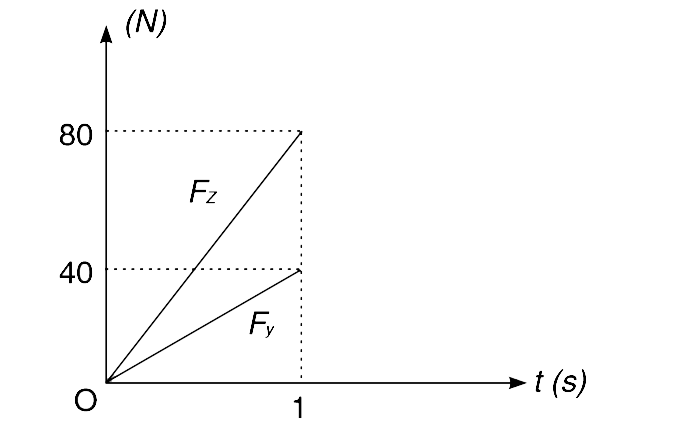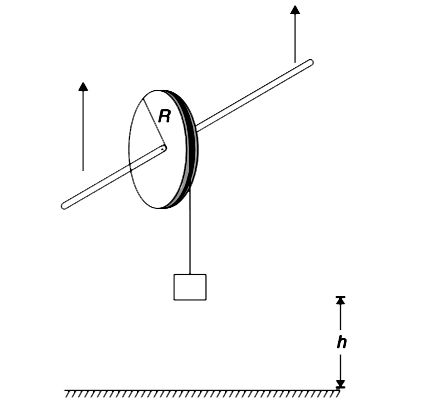In an emergency situation while driving one has tendency to jam the brakes, trying to stop in shortest distance. With wheels locked, the car slides and steering get useless. In ABS system the electronic sensors keep varying the brake pressure so as to keep the wheels rolling (without slipping) while ensuring that the friction remains limiting. Your friend has an old car with good brakes. He boasts saying that all the four wheels of his car get firmly locked and stop rotation immediately after the brakes are applied. You know that your new car which has a computerized anti lock braking system (ABS) is much safer. How will you convince your friend?
In a typical situation, car without ABS needs 20 m as minimum stopping distance. Under identical conditions, what minimum distance a car with ABS would need to stop? Coefficient of kinetic friction between tyre and road is 25% less than the coefficient of static friction
The correct Answer is:15 m
Step by step video, text & image solution for In an emergency situation while driving one has tendency to jam the brakes, trying to stop in shortest distance. With wheels locked, the car slides and steering get useless. In ABS system the electronic sensors keep varying the brake pressure so as to keep the wheels rolling (without slipping) while ensuring that the friction remains limiting. Your friend has an old car with good brakes. He boasts saying that all the four wheels of his car get firmly locked and stop rotation immediately after the brakes are applied. You know that your new car which has a computerized anti lock braking system (ABS) is much safer. How will you convince your friend? In a typical situation, car without ABS needs 20 m as minimum stopping distance. Under identical conditions, what minimum distance a car with ABS would need to stop? Coefficient of kinetic friction between tyre and road is 25% less than the coefficient of static friction by Physics experts to help you in doubts & scoring excellent marks in Class 11 exams.
Updated on:21/07/2023Topper's Solved these Questions
Similar Questions
A particle is acted upon by a force for 1 second whose X component remains constant at Fx=30N but y and z components vary with time as shown in the graph. Calculate the magnitude of change in momentum of the particle in 1 s. What angle does the change in momentum (Δ→P) make with X axis ?

View SolutionThe pulley of radius R can rotate freely about its axle as shown in the figure. A thread is tightly wrapped around the pulley and its free end carries a block of mass m. When the block is at a height h above the ground the system is released (i.e., the pulley is made free to rotate & the block is allowed to fall) and at the same instant the axle is moved up keeping it horizontal all the time. When the block hits the floor the axle has gone up by a distance 2h. Find the angle by which the pulley must have rotated by this time.

View SolutionA car is travelling on road at 50kmh−1. The driver applies brakes and brings the car to rest. Which frictional force does more work: (a) the force between the wheels and the brakes or (b) the force between the wheels and the road?
View SolutionIs it possible that the brakes of a car are so perfect that the car stops instantaneously ?
View SolutionWhen car is moving on a horizontal icy floor, if its brakes are locked,wheels stops rotating and starts liding. What happens to rotational kinetic energy ?
View SolutionAssertion: When brakes are applied on a wet road, a car is likely to skid.
Reason: Brakes prevent rotation of the wheels, and there is not sufficient friction between the road and the whells.
View SolutionA driver of a car driving at 72 kmph notices a child on the road at a distance of 50m . If the weight of the car including the driver is 750kg wt then calculate the resistive force applied on the wheels by the brakes, if the car, comes to stop just in front of the child.
View SolutionIs it possible that the brakes of a car are so parfect that car stops instantaneously . If not give reason.
View SolutionThe speed of a moving car is 60kmh^(-1) . The wheels having diameter of 0.60 m are stopped in 10 rotations by applying brakes. What will be the angular retardation produced by brakes?
View Solutionएक कार 85 किमी./घण्टा की चाल से गतिशील है। उसके पहियों का व्यास 0.75 मी. है। पहियों की कोणीय चाल ज्ञात करो। यदि ब्रेक लगाने पर कार 70.7 मी. दूर जाकर रुकती है तो पहियों का कोणीय त्वरण क्या होगा?
View SolutionA car is initially travelling at 50.0 km/h. The brakes are applied and the car stops over a distance of 35 m. What was magnitude of the car's acceleration while it was braking ?
View SolutionWhy are brake pads used in car braking systems ?
View Solutionकोई कार चाक सामने सड़क पर किसी बच्चे को देखकर अचानक ब्रेक लगाता है। यदि उसने सीट बेल्ट नहीं बाँधी है, तो वह आगे की ओर झटका खाता है ओर उसका सर स्टियरिंग व्हील से जा सकता है। ऐसा क्यों ?
View SolutionA car is travelling on road at 50kmh−1. The driver applies brakes and brings the car to rest. Which frictional force does more work: (a) the force between the wheels and the brakes or (b) the force between the wheels and the road?
View SolutionAssertion: When brakes are applied on a wet road, a car is likely to skid.
Reason: Brakes prevent rotation of the wheels, and there is not sufficient friction between the road and the whells.
View Solution
